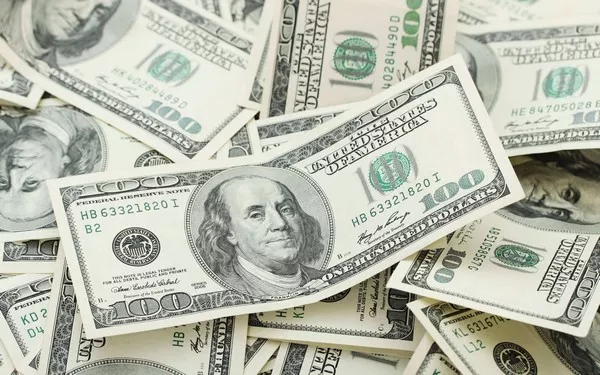In the world of forex trading, understanding the dynamics of currency pairs is essential for making informed decisions. One such currency pair that often catches the attention of traders and investors is USD/JPY, which represents the exchange rate between the US Dollar (USD) and the Japanese Yen (JPY). In this comprehensive guide, we will delve deep into the intricacies of USD/JPY, providing you with the knowledge needed to navigate this popular currency pair effectively.
1. The Basics of USD/JPY
Let’s start by breaking down the fundamentals of USD/JPY. This currency pair represents how many Japanese Yen (JPY) you need to purchase one US Dollar (USD). For example, if the USD/JPY rate is 110.00, it means you’ll need 110 Japanese Yen to buy one US Dollar.
Historical Overview
Understanding the history of USD/JPY can provide valuable insights for traders. Historically, this pair has been influenced by various factors, including economic policies, interest rates, and geopolitical events. Notably, Japan’s low-interest rates have often made the Yen a popular choice for carry trades.
Role of the USD
The US Dollar plays a crucial role in this currency pair. It is considered a global reserve currency and is influenced by factors such as the US economy, interest rates set by the Federal Reserve, and global geopolitical events.
Influence of the Japanese Yen
On the other side, the Japanese Yen is known for its stability and is impacted by the Bank of Japan‘s policies, Japanese economic indicators, and trade relationships with other nations.
2. Factors Affecting USD/JPY Exchange Rate
Now that we have a basic understanding of USD/JPY let’s explore the various factors that can impact its exchange rate.
Economic Data and Announcements
Economic indicators from both the United States and Japan have a significant influence on USD/JPY. These include GDP growth, employment figures, inflation rates, and trade balances. Traders closely monitor these releases for insights into the health of each country’s economy.
Interest Rates
Interest rates set by the Federal Reserve and the Bank of Japan play a pivotal role in determining the attractiveness of each currency. Higher interest rates in the United States can make the US Dollar more appealing to investors, potentially leading to a stronger USD/JPY exchange rate.
Geopolitical Events
Global events, such as trade disputes or political instability, can impact the USD/JPY exchange rate. Traders often seek safe-haven assets like the Japanese Yen during times of uncertainty, which can lead to increased demand and a stronger Yen.
Correlation with Other Markets
The USD/JPY pair often exhibits correlations with other financial markets. For instance, it can have a strong inverse relationship with gold prices, where a rising USD/JPY may lead to a drop in gold prices and vice versa.
3. Trading Strategies for USD/JPY
Now that we’ve covered the factors influencing USD/JPY, it’s essential to discuss some trading strategies to navigate this currency pair successfully.
Technical Analysis
Many traders use technical analysis to make decisions in the forex market. This involves studying charts, patterns, and indicators to identify potential entry and exit points. Common technical indicators for USD/JPY include moving averages and Relative Strength Index (RSI).
Fundamental Analysis
Fundamental analysis involves studying economic and geopolitical factors to anticipate currency movements. Traders who prefer this approach closely follow economic calendars and news releases to make informed decisions.
Risk Management
Managing risk is crucial in forex trading. Traders should use stop-loss orders to limit potential losses and avoid over-leveraging their positions. Diversification can also help spread risk.
Long-Term vs. Short-Term Trading
USD/JPY can be traded on various timeframes, from minutes to years. Traders should choose a strategy that aligns with their risk tolerance and trading goals. Long-term investors may focus on fundamental analysis, while short-term traders may use technical analysis for quick gains.
4. USD/JPY Outlook and Future Trends
As of [current date], the USD/JPY exchange rate stands at [current rate]. To provide a more holistic view, it’s essential to discuss the future outlook and potential trends for this currency pair.
Economic Recovery Post-COVID
The global economy is still recovering from the impact of the COVID-19 pandemic. The future trajectory of USD/JPY may be influenced by how both countries manage their recoveries, including stimulus measures and vaccination efforts.
US-Japan Trade Relations
Any developments in the trade relationship between the United States and Japan can significantly affect USD/JPY. Trade agreements or disputes can lead to sudden currency movements.
Central Bank Policies
The policies of the Federal Reserve and the Bank of Japan will continue to be key drivers of USD/JPY. Traders should stay updated on interest rate decisions and monetary policy statements.
In conclusion, understanding USD/JPY is essential for forex traders and investors seeking opportunities in the currency market. By considering historical data, economic factors, trading strategies, and future trends, you can make informed decisions when trading this dynamic currency pair. Remember to stay informed, practice risk management, and adapt your strategies as market conditions evolve.
Related Topics:
How Much is the Singapore Dollar to USD?
CAD vs. USD: Which Is Stronger?
The USD to GBP Exchange Rate: What You Need to Know


























